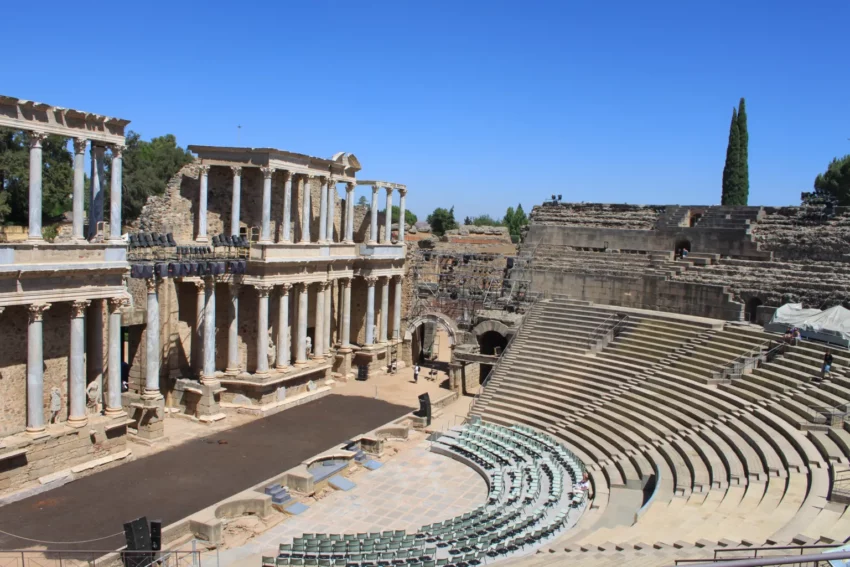The Roman Theatre of Mérida: A Timeless Spectacle
Nestled in Mérida, Spain, the Roman Theatre of Mérida stands as a testament to ancient Roman architecture and entertainment. This iconic structure, built between 16 and 15 BCE under the consul Vipsanius Agrippa, continues to captivate visitors with its rich history and remarkable design.
Get your dose of History via Email
A Storied Past
The theatre was once the heart of Roman theatrical performances. Over the centuries, it saw significant renovations. Notably, the end of the 1st century or early 2nd century CE, possibly during Emperor Trajan’s reign, saw the erection of the current facade of the scaenae frons. Another major renovation occurred during Constantine I’s time (330-340 CE), adding new decorative elements and a walkway.
Abandoned in Late Antiquity, the theatre gradually became buried under earth. Only the upper tiers of seats, known locally as “The Seven Chairs,” remained visible. Legend says Moorish kings once sat there to decide the city’s fate.
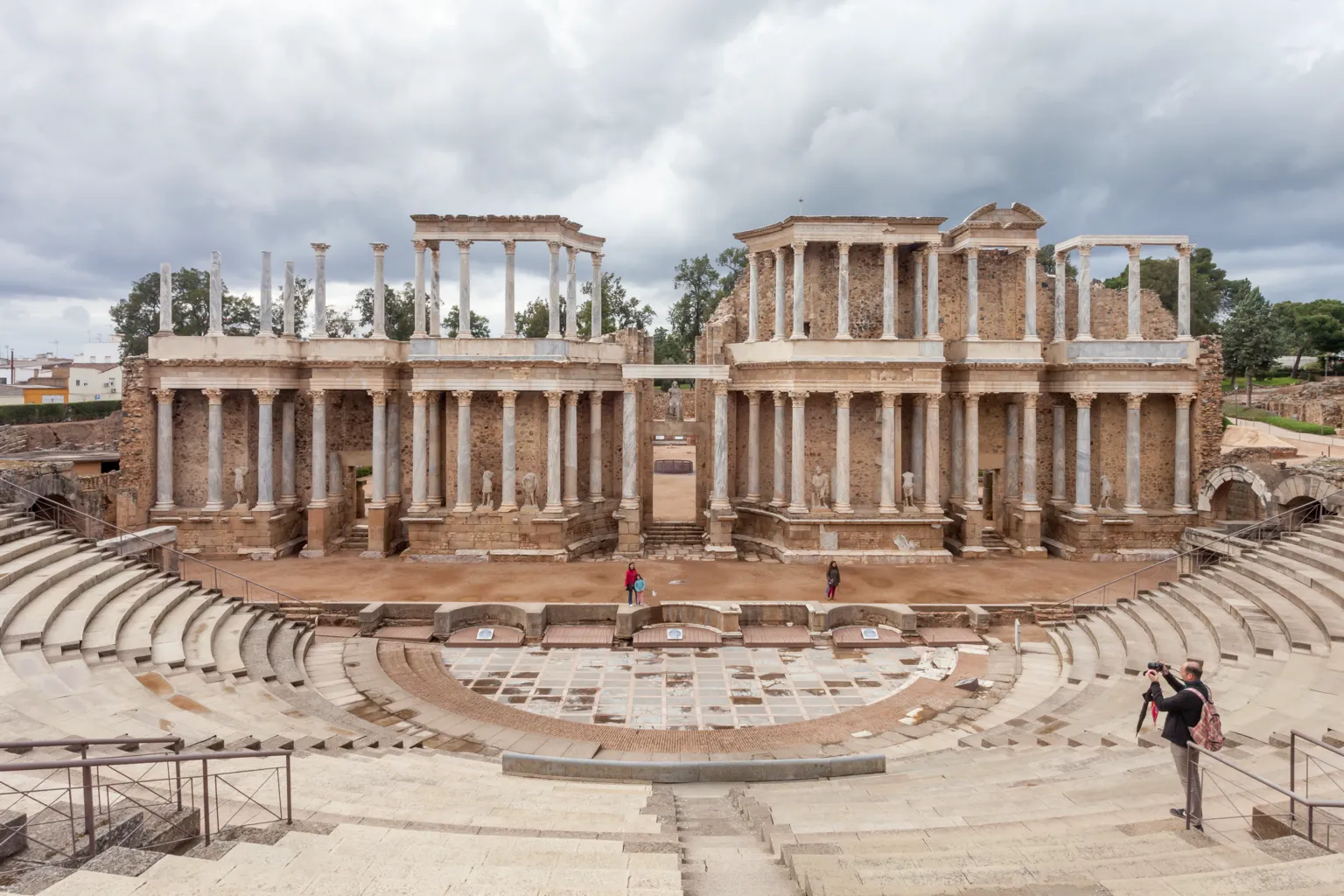
Architectural Marvel
The theatre, part of an entertainment complex with the Amphitheatre of Mérida, belongs to the Archaeological Ensemble of Mérida. This ensemble is one of Spain’s largest archaeological sites and has been a UNESCO World Heritage Site since 1993. It follows Vitruvius’ architectural principles and resembles other Roman theatres in Dougga, Orange, Pompeii, and Rome.
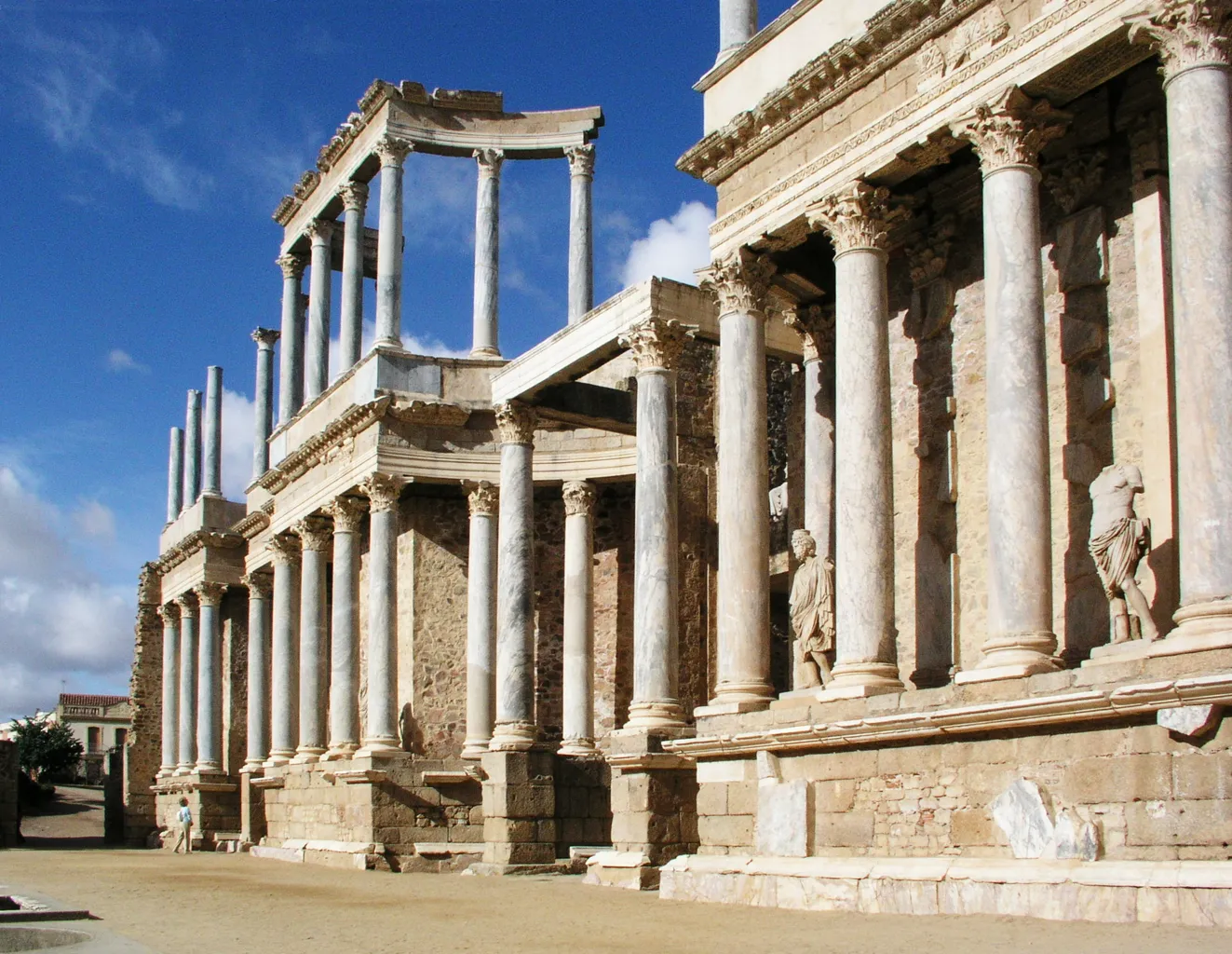
Seating and Orchestra
The theatre’s semicircular grandstands (cavea) blend into San Albin hill. It originally seated 6,000 spectators. The stands divide into three sections: the innermost ima cavea with 22 rows, the middle media cavea with five rows, and the upper summa cavea, now heavily deteriorated. The wealthier classes sat in the ima cavea, divided into five radial sectors by stairs and corridors. Six doors at the top provided access, covered by a semicircular dome.
The middle and upper caveas, supported by arches and barrel vaults, also have five rows each. Thirteen exterior doors ensure easy access. The orchestra, a semicircular space for the chorus, features white and blue marble paving and is surrounded by honor tiers for authorities. A marble parapet separates it from the stands.
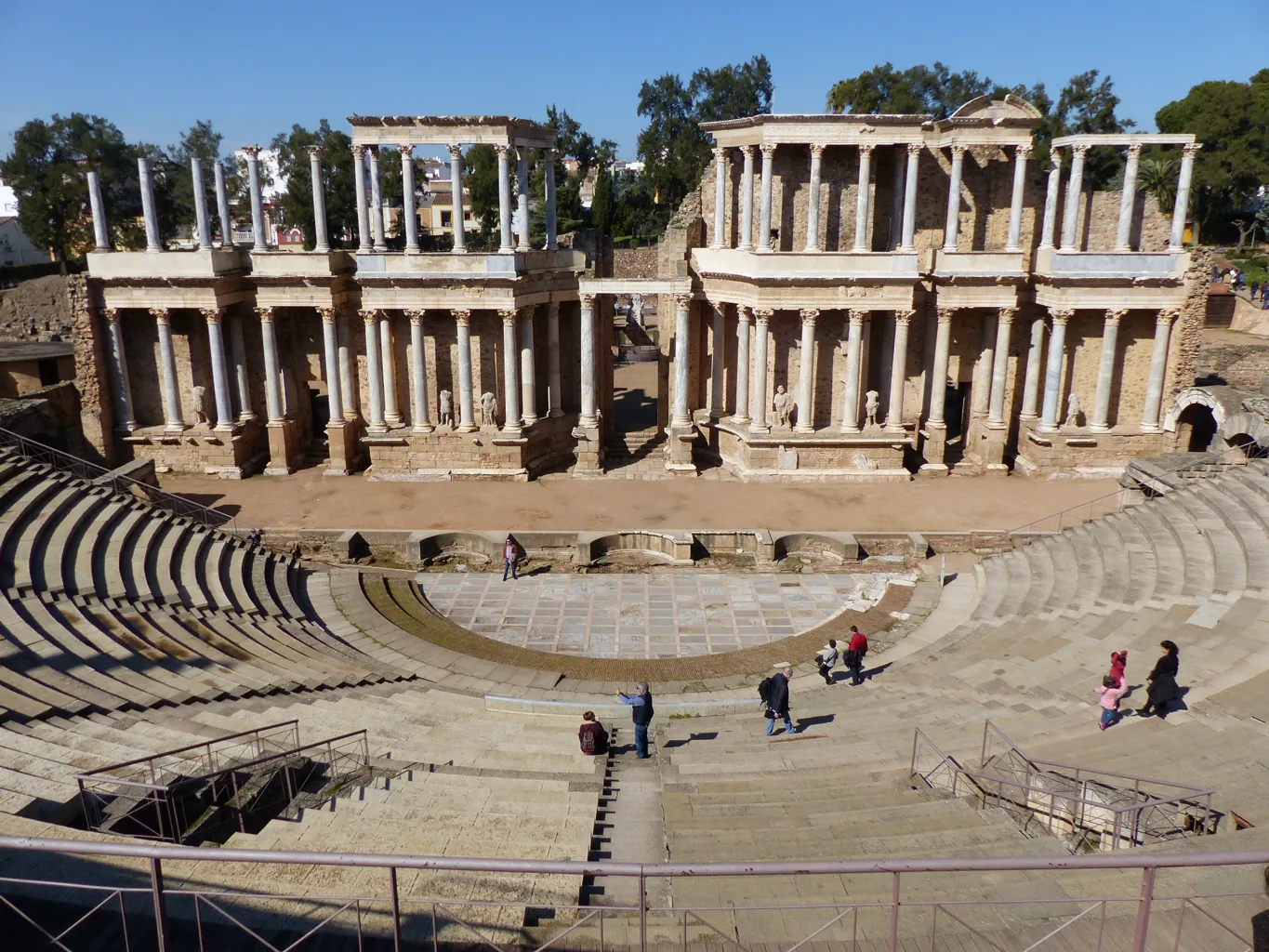
The Stage
The stage (proscenium) features a stone leading edge and a rectangular wooden platform (pulpitum). Holes in the floor once held scenic backdrop posts. The most striking feature is the scaenae frons, a 7.5m wide, 63m long, and 17.5m high backdrop. Corinthian columns of blue-veined marble with white bases and capitals support an ornate entablature. Provisional sculptures, including the goddess Ceres and other imperial portraits, adorn this area. The original statues are now in the National Museum of Roman Art.
Three doors allowed actors to enter the stage: the central valva regia and two lateral valva hospitalium. Several backstage units accommodated performers and technicians.
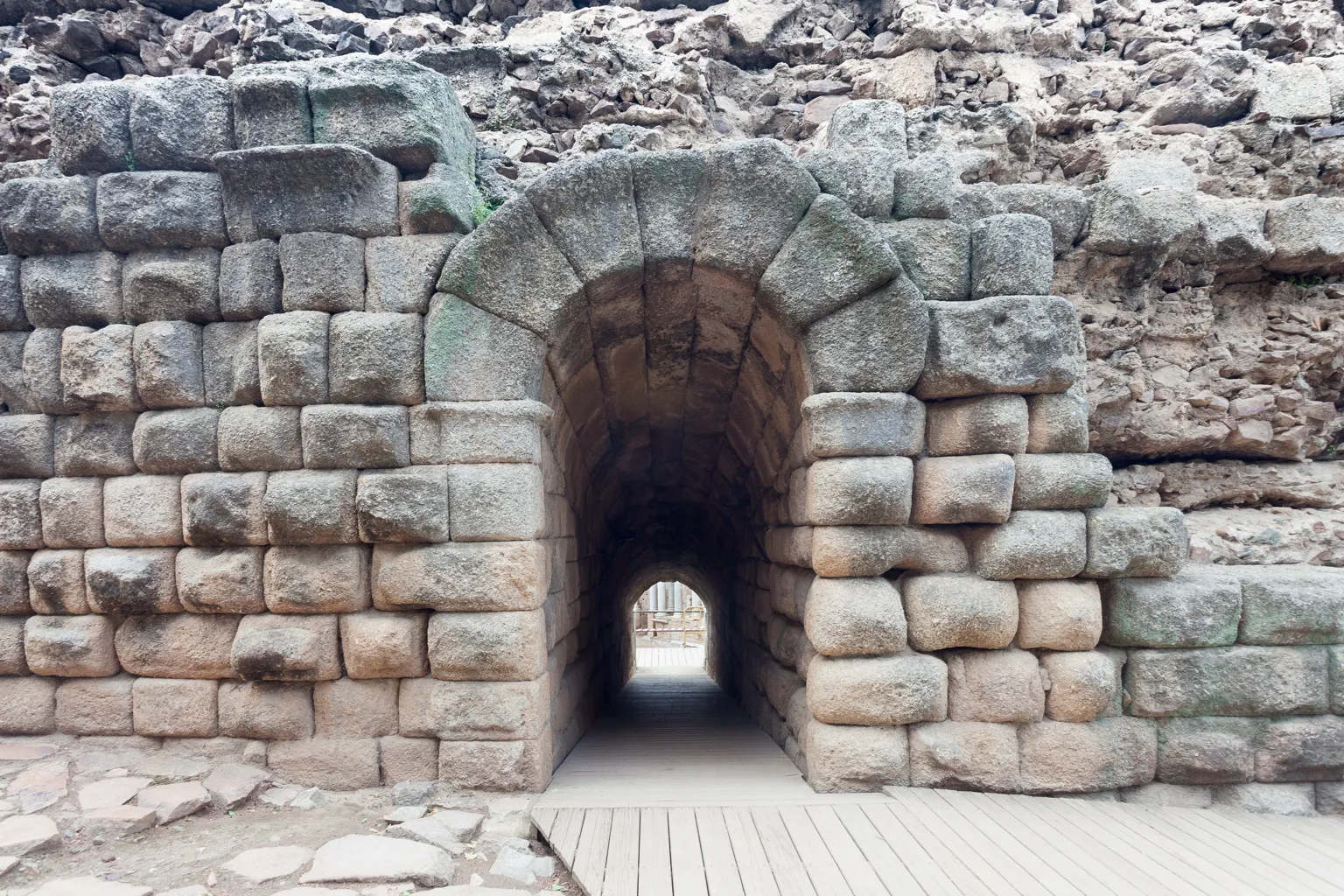
The Peristyle
Behind the stage lies a garden area (peristyle) surrounded by columns and a portico, serving as a recreation space. At the garden’s end, aligned with the main stage door, a small room dedicated to the imperial cult houses a sculptural portrait of Emperor Augustus. High in the northern corner, latrines are found, while a post-abandonment house features a courtyard with murals depicting life-size human figures.
Excavation and Restoration
Visible remains of the theatre, known as “The Seven Chairs,” led to initial excavations in 1910 by archaeologist José Ramón Mélida. Limited resources delayed progress until the late 20th century, when most of the theatre was excavated. Numerous columns, cornices, statues, and other materials were uncovered, especially in the front stage area.
The theatre hosted its first modern production in 1933. During the 1960s and 1970s, architect and archaeologist José Menéndez Pidal y Álvarez led efforts to rebuild the front stage.
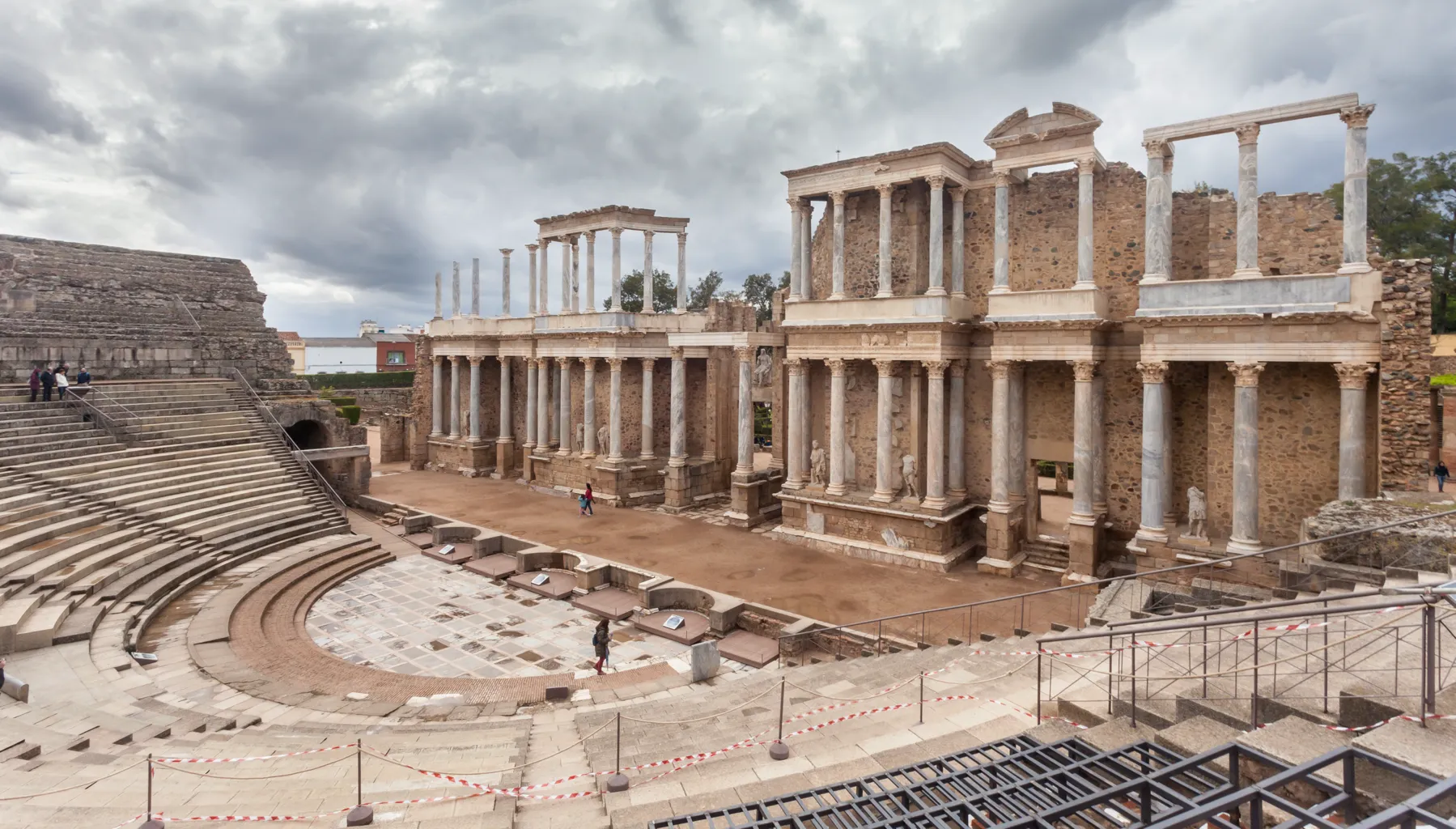
Modern Use
Today, the Roman Theatre of Mérida is a prominent monument in the city. Since 1933, it has hosted the International Festival of Classical Theatre of Mérida, Spain’s oldest classical theatre festival. This event, alongside the theatre’s rich history and architectural splendor, makes the Roman Theatre of Mérida a must-visit cultural treasure.
Sources:

